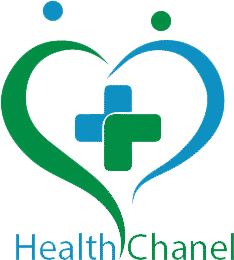Heart disease is often called the “silent killer” because it can develop unnoticed until it becomes serious. Many people ignore the early signs of heart disease, assuming symptoms like fatigue or shortness of breath are just a part of aging or stress. However, recognizing symptoms of heart problems early can be life-saving. Understanding the key heart disease risk factors can also help prevent complications before they become severe.
Signs of an Unhealthy Heart
Recognizing symptoms of an unhealthy heart is crucial for early detection. Here are some key warning signs:
1. Shortness of Breath
If you find yourself gasping for air after mild activity or even at rest, it could indicate signs of heart failure or other cardiac issues.
2. Chest Discomfort or Pain
One of the most critical heart attack warning signs, chest pain or discomfort may feel like pressure, tightness, or a burning sensation. It’s a signal that the heart may not be getting enough oxygen.
3. Fatigue and Weakness
Constant exhaustion, especially without a clear cause, can be a symptom of poor heart function and may indicate coronary artery disease symptoms or even heart failure.
4. Irregular Heartbeat
Heart palpitations, skipped beats, or a racing heart can suggest an arrhythmia or other underlying cardiac conditions.
5. Swelling in Legs, Ankles, and Feet
Fluid retention in the lower extremities can indicate signs of heart failure, as the heart struggles to pump blood efficiently.
6. Dizziness or Fainting
Frequent dizziness can be a result of low blood flow to the brain, possibly linked to high blood pressure symptoms or other cardiovascular issues.

Major Risk Factors for Heart Disease
Understanding what increases the risk of heart disease is key to prevention.
1. High Cholesterol and Blood Pressure
Cholesterol and heart disease are closely connected. High cholesterol leads to plaque buildup in the arteries, increasing the risk of heart attacks and strokes. Similarly, high blood pressure symptoms indicate excess strain on the heart, which can lead to long-term damage.
2. Diabetes and Obesity
Diabetes and heart disease risk go hand in hand. High blood sugar damages blood vessels, making heart disease more likely. Additionally, obesity and heart health are closely linked, as excess weight increases strain on the heart.
3. Smoking and Alcohol Use
Smoking and heart disease are directly connected. Smoking damages blood vessels, leading to increased plaque buildup. Excessive alcohol can also raise blood pressure and cholesterol levels, increasing heart disease risk.
4. Family History
If you have a family history of heart disease, your risk is naturally higher. However, lifestyle changes can help mitigate genetic factors.
5. Lack of Physical Activity
Physical inactivity and heart risk go hand in hand. A sedentary lifestyle weakens the heart muscle and contributes to weight gain, high cholesterol, and high blood pressure.
6. Poor Diet
Poor diet and cardiovascular health are linked through high intake of processed foods, sugar, and unhealthy fats. A heart-healthy diet rich in fruits, vegetables, lean protein, and whole grains is essential.
7. Chronic Stress
The link between stress and heart disease is often overlooked. Prolonged stress leads to high blood pressure and unhealthy coping habits like overeating and smoking.
8. Age and Gender Differences
Age-related heart disease risk increases as arteries stiffen and cholesterol levels rise over time. Additionally, gender differences in heart disease mean women may experience subtler symptoms, leading to delayed diagnosis and treatment.
How to Prevent Heart Disease
While some risk factors are beyond our control, many can be managed through lifestyle changes. Preventing heart disease requires proactive steps:
- Eat a heart-healthy diet rich in fiber, lean proteins, and healthy fats.
- Stay active with at least 150 minutes of moderate exercise per week.
- Manage stress through mindfulness, therapy, or relaxation techniques.
- Quit smoking and limit alcohol to protect your arteries and heart.
- Monitor your blood pressure, cholesterol, and sugar levels regularly.
- Get regular check-ups and discuss heart disease screening tests with your doctor.

Final Thoughts
Heart disease doesn’t happen overnight, and the warning signs can be subtle. Paying attention to early signs of heart disease and addressing heart disease risk factors can significantly reduce the chances of serious complications. By making heart-conscious choices today, you can safeguard your health for the future.

